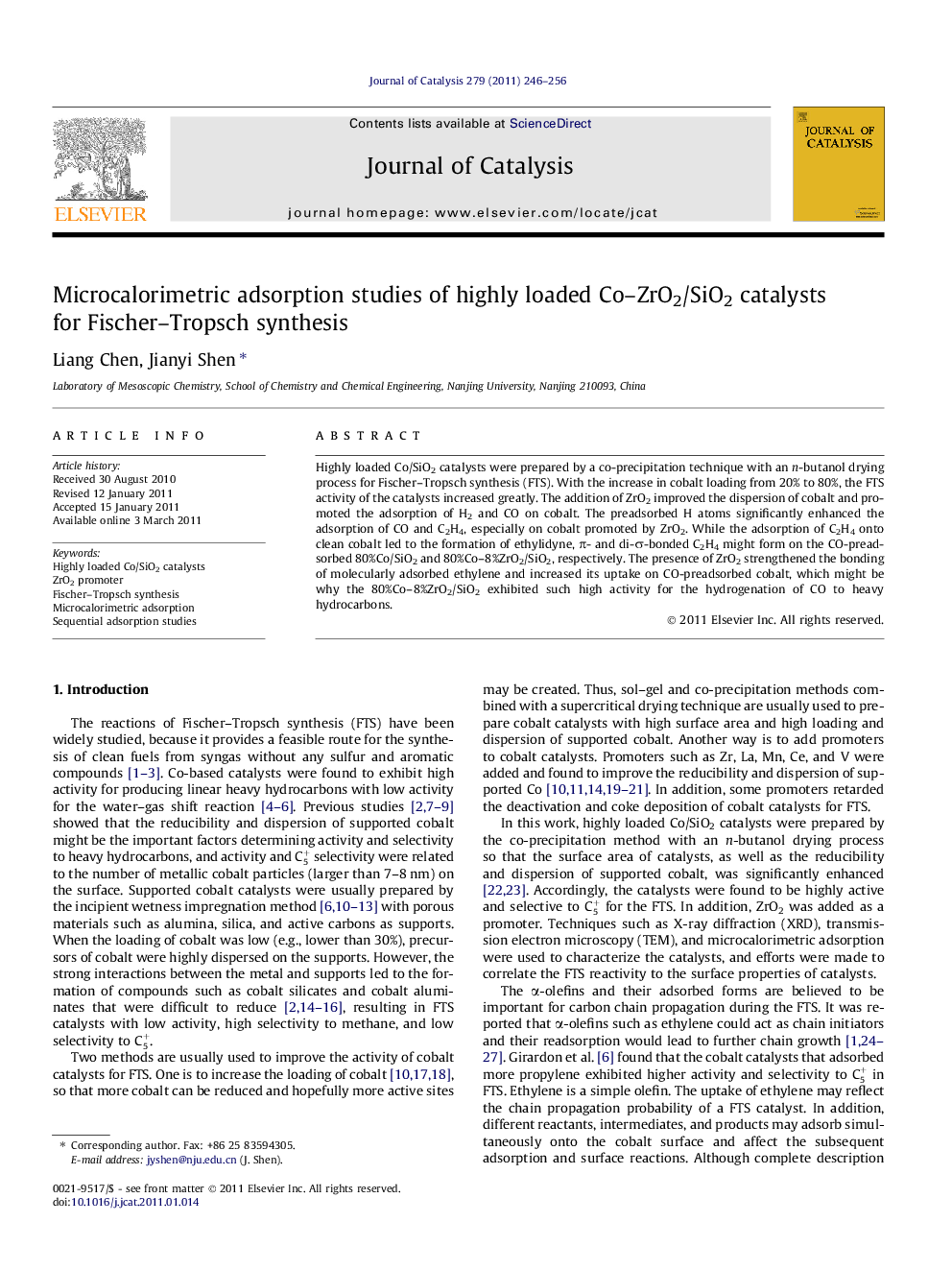| Article ID | Journal | Published Year | Pages | File Type |
|---|---|---|---|---|
| 61815 | Journal of Catalysis | 2011 | 11 Pages |
Highly loaded Co/SiO2 catalysts were prepared by a co-precipitation technique with an n-butanol drying process for Fischer–Tropsch synthesis (FTS). With the increase in cobalt loading from 20% to 80%, the FTS activity of the catalysts increased greatly. The addition of ZrO2 improved the dispersion of cobalt and promoted the adsorption of H2 and CO on cobalt. The preadsorbed H atoms significantly enhanced the adsorption of CO and C2H4, especially on cobalt promoted by ZrO2. While the adsorption of C2H4 onto clean cobalt led to the formation of ethylidyne, π- and di-σ-bonded C2H4 might form on the CO-preadsorbed 80%Co/SiO2 and 80%Co–8%ZrO2/SiO2, respectively. The presence of ZrO2 strengthened the bonding of molecularly adsorbed ethylene and increased its uptake on CO-preadsorbed cobalt, which might be why the 80%Co–8%ZrO2/SiO2 exhibited such high activity for the hydrogenation of CO to heavy hydrocarbons.
Graphical abstractWhile the adsorption of C2H4 on clean cobalt surface led to the formation of ethylidyne, π and di-σ-bonded C2H4 might form on the CO-preadsorbed 80%Co/SiO2 and 80%Co–8%ZrO2/SiO2, respectively.Figure optionsDownload full-size imageDownload high-quality image (97 K)Download as PowerPoint slideResearch highlights► Highly active Co–ZrO2/SiO2 catalysts were prepared for Fischer–Tropsch synthesis. ► ZrO2 promoted the dispersion of Co and enhanced the adsorption of CO and H2 on Co. ► The preadsorbed H promoted the adsorption of CO and ethylene on Co. ► ZrO2 strengthened the bonding of adsorbed C2H4 on Co with preadsorbed CO.
